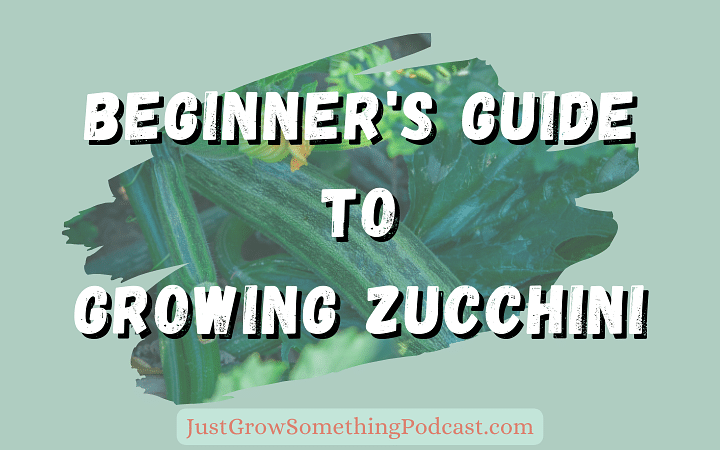
Growing zucchini and other summer squashes is a rewarding experience that can provide an abundant and healthy harvest. However, for beginning gardeners it can be daunting, especially if we've heard nightmare scenarios from experienced gardeners in terms of pests or diseases of squash. Don’t be deterred. In this article, we will go through the steps to help you successfully grow zucchini and other summer squashes.
 Step 1: Pick the Right Variety of Squash
Step 1: Pick the Right Variety of Squash
There are many varieties of zucchini and summer squash, so it's essential to find the perfect one for your needs. Some types of squash grow in compact spaces, while others need more room to spread out. Take a look at the seed packets or seed catalogs to help you choose the variety best suited for your garden and cooking needs. You can even grow them in containers!
Step 2: Choose a Suitable Location
Once you have chosen your variety of squash, the next step is to identify the ideal spot in your garden. Squash plants need full sunlight for at least 6 to 8 hours each day. They also need well-drained soil with a pH level between 5.8 and 6.8. Prepare the soil by adding compost or other organic materials to promote healthy growth or fill a container with the proper soil and amendments.
Step 3: Sow the Seeds at the Right Time
Squash plants need warm soil to germinate. Direct sow the seeds outdoors after the last frost has passed and the soil temperature has reached at least 70°F. If you prefer to start indoors, sow the seeds in a pot three to four weeks before your anticipated planting date. This is often several weeks after your last anticipated spring frost.
If your squash is prone to pests and diseases, plant so sow multiple crops. Squash germinate and mature very quickly and it’s possible to get three sets of crops growing in longer season areas to ensure a continuous harvest.
Step 4: Water Deeply and Consistently
Provide your squash with an adequate amount of water consistently. Your schedule will depend heavily on the weather conditions. Water at the base of the plant, avoiding moisture on the leaves, which can lead to the spread of diseases. Squash plants need approximately 1 to 2 inches of water each week, either from rainfall or watering. Adding a thick layer of mulch around the root zone will conserve water and keep the roots cooler. Remember, deeper less frequent waterings are more beneficial than daily shallow ones.
Step 5: Weed Regularly
Weeds can compete with your squash plants for nutrients and water. Regularly checking for and pulling out weeds can help prevent this competition. Mulch helps here, too, by preventing weed seeds from taking hold in the soil and germinating.
Step 6: Control Pests
Pests like squash vine borers and cucumber beetles can cause significant damage to your squash plants. Using lightweight row covers or insect netting will protect your plants early in the season. Discourage squash vine borer eggs by making foil collars and positioning them around the plant base. Picking insects like cucumber beetles and pickleworms by hand can also help prevent severe infestations. Companion planting with other plants that mask the chemical signals of the squash, like basil, mint, and parsley, or that attract beneficial insects, like sweet alyssum, can also help with pest control.
Step 7: Feed Them
Squash plants need an adequate supply of nutrient-filled soil to produce good yields. Incorporating a nitrogen fertilizer at the beginning of the season can give the plants the essential nutrients they need to grow. Use a slow-release granular fertilizer or compost and side dress with a balanced nutrient after the plants begin to flower.
Step 8: Harvest at the Right Time
Summer squash and zucchini are best harvested when they are about 6 to 8 inches long. Round or oblong varieties should be harvested young, as well. Harvest the fruits before they become too large and seedy, as they will eventually stop producing. Use garden scissors or a knife to cut the fruit cleanly from the plant; breaking off the fruit may damage the stem of the plant. Leave a one-inch segment at the top of the fruit to prevent bacteria from entering the fruit and causing early spoilage.
Step 9: Store Properly
Summer squash fruits are best stored whole, unwashed, and refrigerated for no more than ten days. Wash the fruit before using it to remove any dirt. Place the fruit in a plastic or paper bag in the crisper drawer of the refrigerator with the bag open to encourage air circulation. Avoid storing squash below 40 Fahrenheit for more than a few days to prevent chilling damage.
Bonus tip: Provide Support
Zucchini plants tend to sprawl, and the weight of their fruit can cause damage. You can use stakes, trellises, or cages to keep the plants upright and avoid bending and breaking.
Growing zucchini and other summer squashes can be an easy first plant for beginners since they can grow relatively quickly and don't require much maintenance. However, it's essential to identify the right variety, provide enough sunlight and water, and to fertilize sufficiently for healthy growth. Enjoy the experience of growing your summer squash!
Your friend in the garden,

Resources:
Ep. 146 - Growing Zucchini and other Summer Squashes
Best Companion Plants for Zucchini and One Potentially Disastrous One
